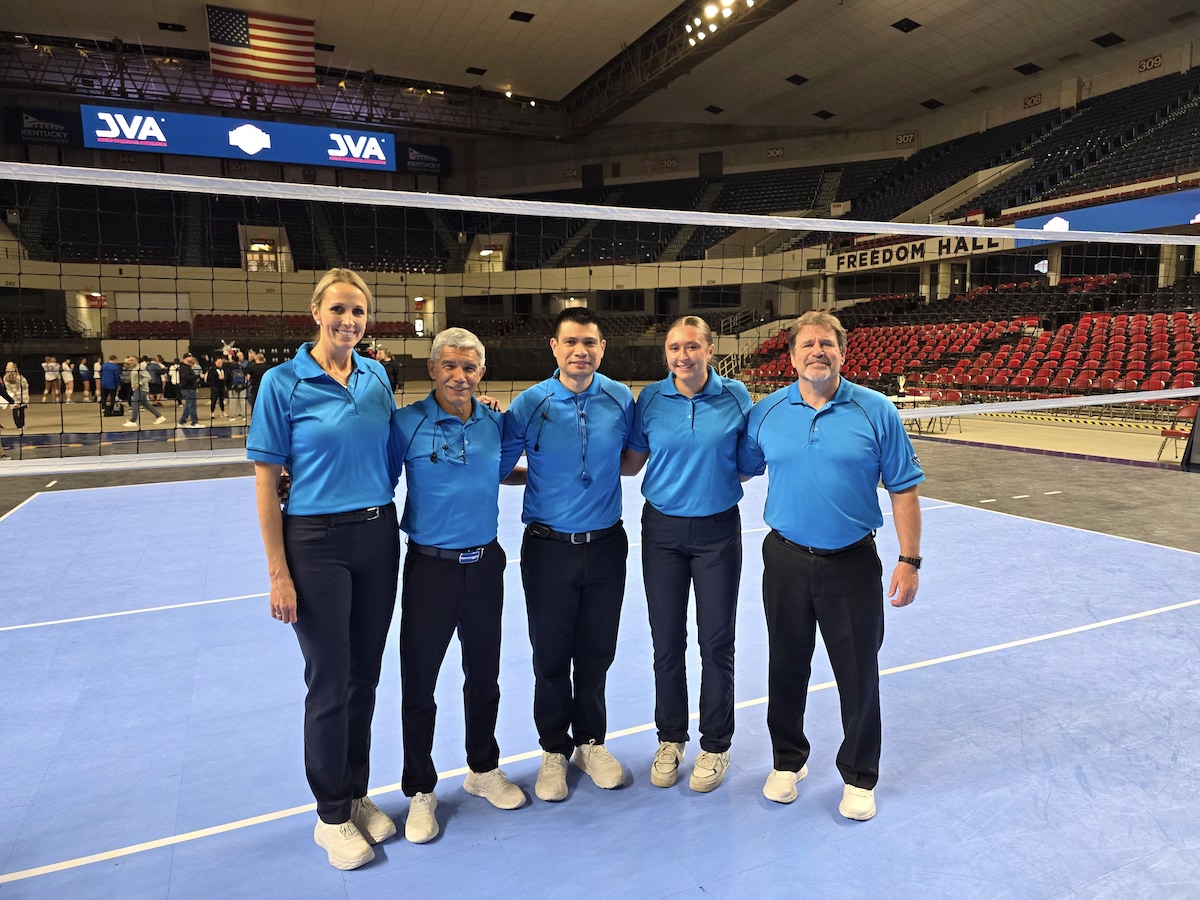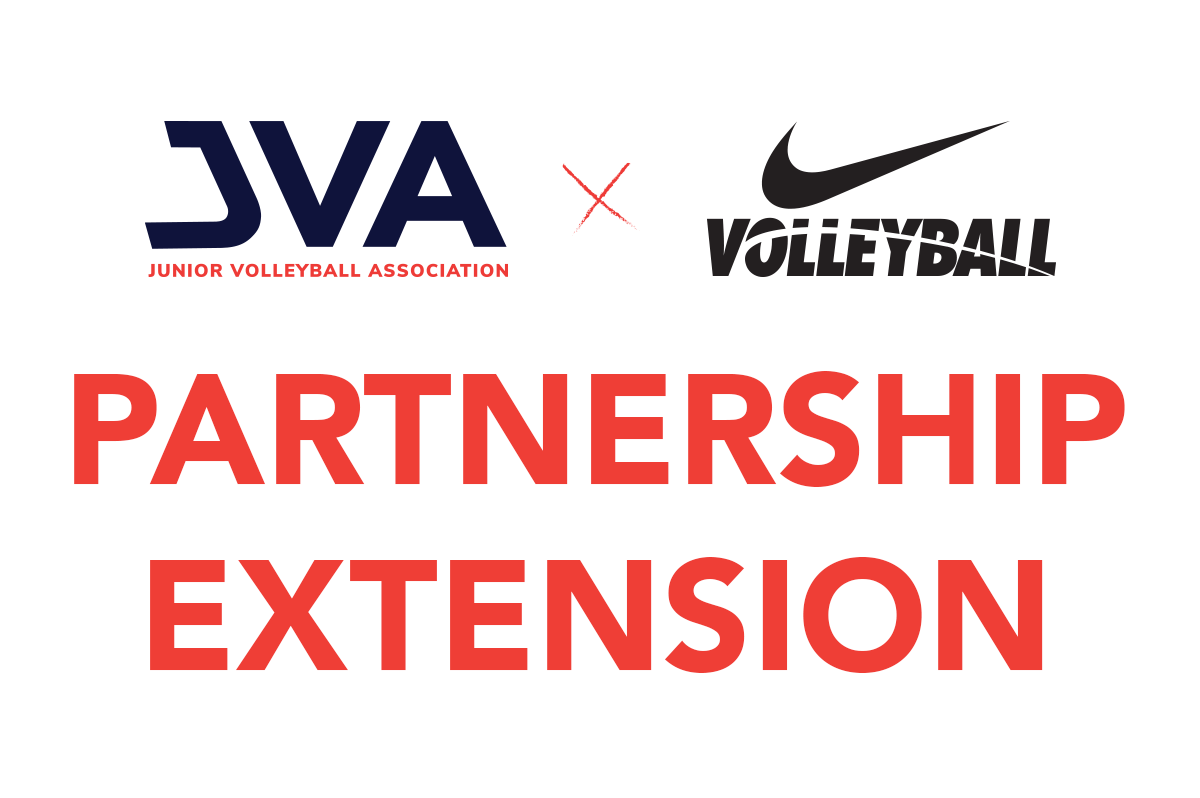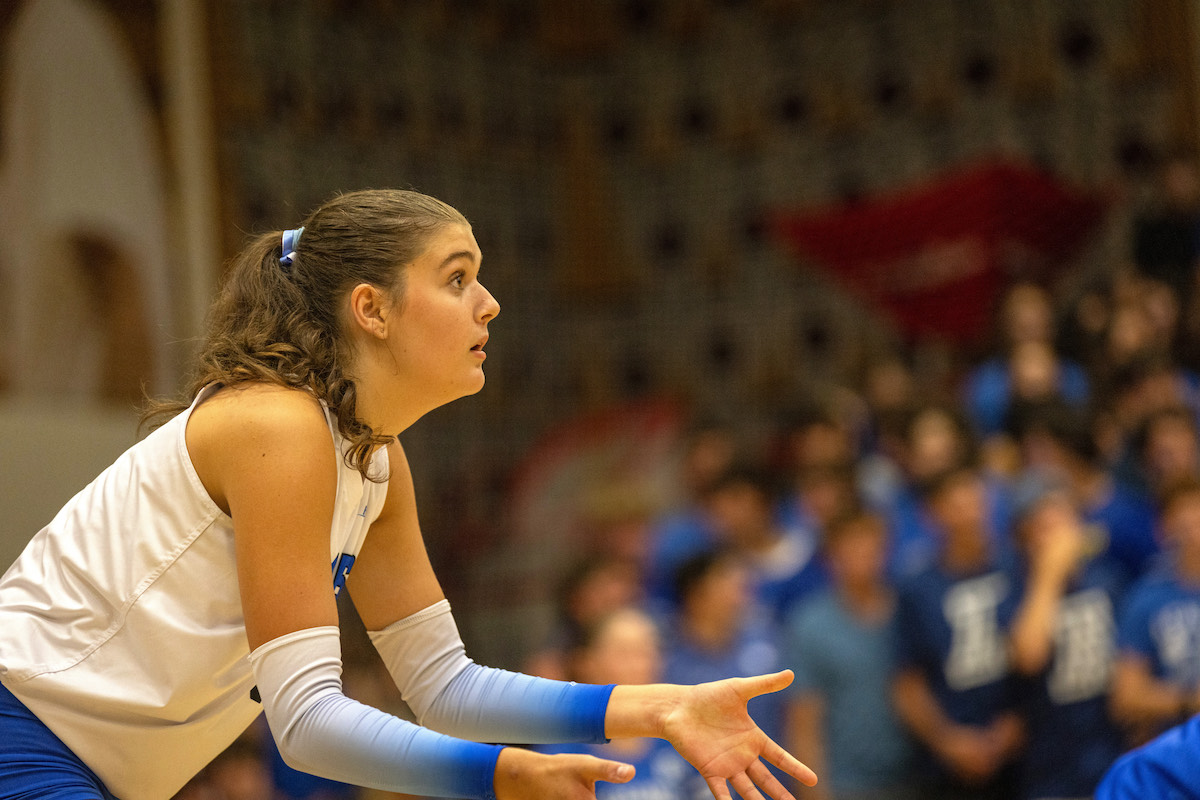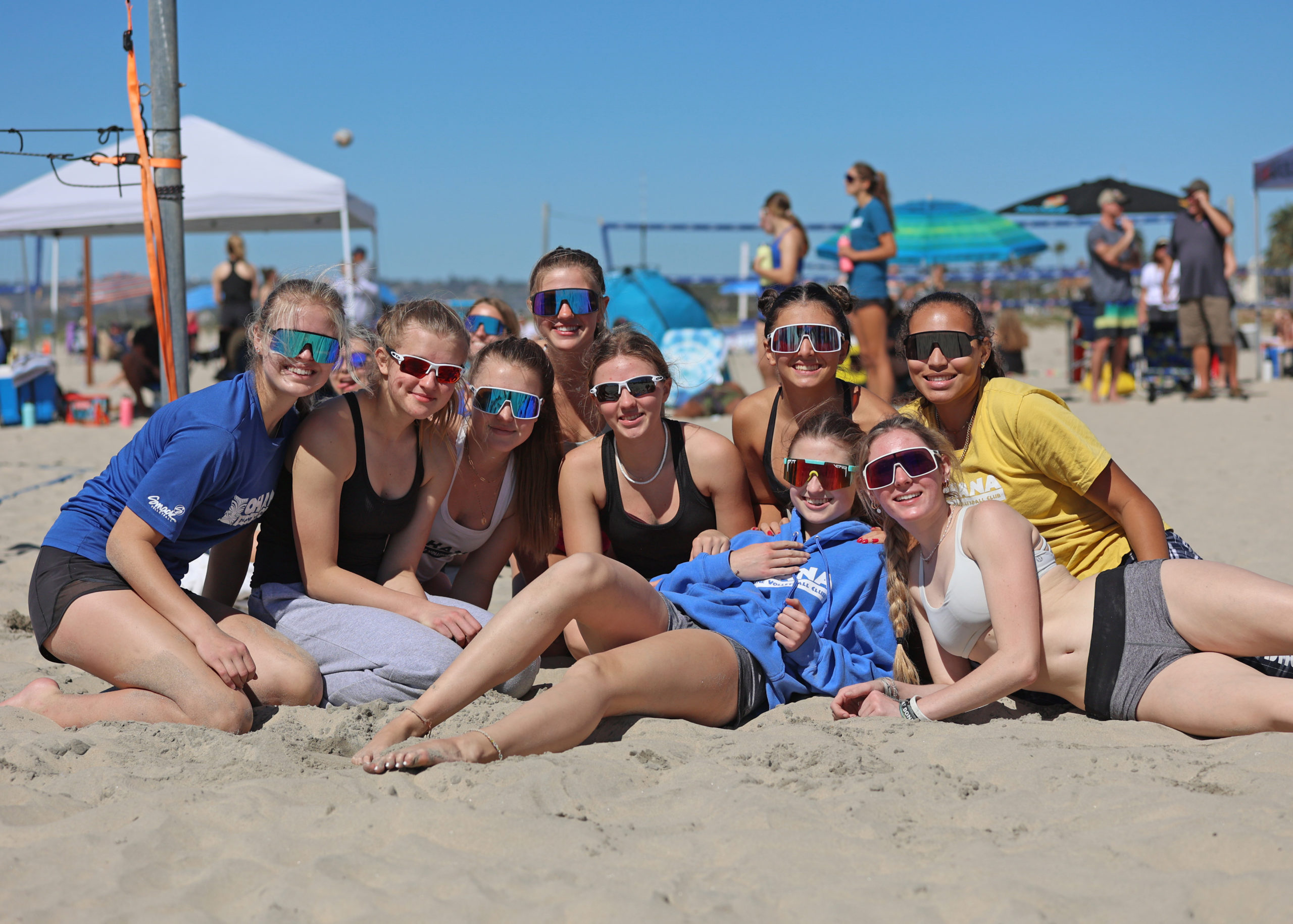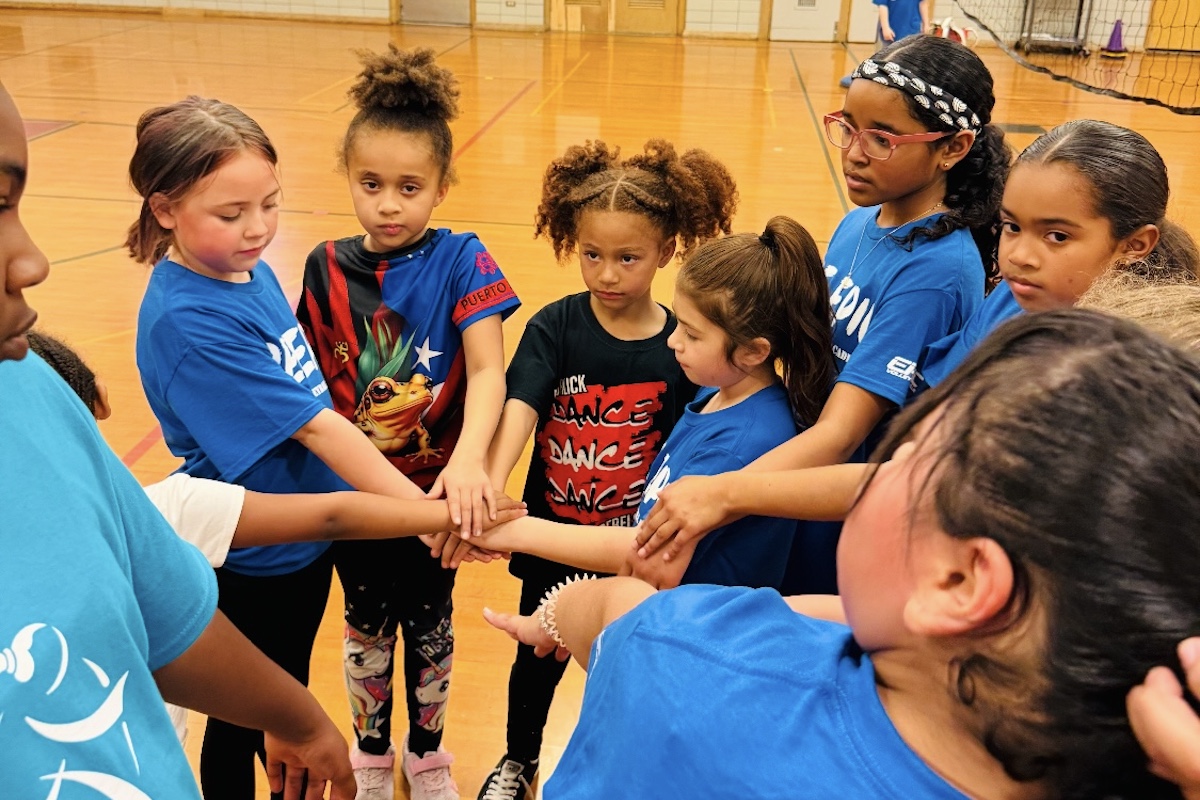Setters touch the ball more than anyone else in a volleyball match, therefore it’s critical that coaches find ways to get their setters as many setting repetitions as possible. Even more important, is the quality of the touches on the ball, so the setter is developing proper habits to be able to deliver a clean, hittable set. Here are drills to train proper setting habits, and eliminate the bad ones.
Common Bad Habits of Setting:
- Poor footwork: setters should be stepping to the ball with a left foot, then right foot and transferring their weight through the ball (finish on right foot).
- Hands are drawn too low: hands should be above forehead, thumbs by hairline
- Follow through is not to target: hands should freeze to where you want the set to go. Hands should stay close together.
1. Train Proper Footwork
To ensure better location, we want to make sure there is a transfer of weight or step from left to right toward the target. You don’t want your players to stand with their feet together and use only their upper body to set the ball as they can be squared up, but still rotate the hips or hands easily. The left to right movement not only helps with power, but it helps direct the ball on a straight line. (baseball example)
Drills:
A. Footwork sequence without ball (plant left/ lead right to target)
- Player starts in read defense position in right back and releases to the net.
- Player hits slant at net, hands up, eyes on where ball would be coming from, step left/ right to target and cover.
- Repeat with 1 step off the net
- Repeat with 3 steps off the net
B. Tossing sequence for footwork work with ball (plant left/ lead right to target)
- Setter stands at net. Coach tosses perfect pass. Left/ right to target. The focus is on leading with the right foot to target so the rest of the body follows. The goal is to set the ball on a good line.
- Setter stands at net. Coach tosses ball one step off the net. Step left to ball; square up, right to target.
- Setter stands at net. Coach tosses ball 3 steps off the net. Step left, right to ball. Plant with left, square, and step right to target.
- Setter stands at net. Coach tosses ball behind the setter. Step left, square up, right to target.
C. Setter releases from base or serve receive (Right Back). After the setter becomes familiar and comfortable with the left/right footwork start the setter from the back-row in read position. The coach slaps the ball to initiate the setter’s release. Repeat the same series.
D. Setter releases from serve receive (Left Back). After the setter becomes familiar and comfortable with the left/right footwork start the setter from the left back. The coach slaps the ball to initiate the setter’s release. Repeat the same series.
E. Jump Setting. After the setter becomes comfortable with more movement, add a jump setting series using the same sequence.
* This entire sequence should be done over and over until the footwork is automatic.
- Perfect toss
- 1 step off the net
- 3 steps off the net
- 1 step behind the target zone
- 3 steps behind target zone/ off the net
F. Triangle setting series. Have your players stand at the net with a target in the attacking zone and toss them a ball with the focus strictly on the left to right finish toward the target. The setter should finish with her right foot pointed toward the target.
2. Draw the hands from too low
We want players to draw their hands to their foreheads (Beginner) or even higher (Advanced). Setters that draw their hands from their hips to set will slap at the ball and will also have trouble accepting the ball into the hands at the same time, causing for a double hit. Before you toss to your players say the word DRAW and force your players to draw their hands to the appropriate spot before they are allowed to set the ball.
Drills:
A Explain Small Triangle. Hands should make a small triangle when you draw and when you finish. Players with partners. One partner makes triangle, the second partner pushes the ball into her hands. 10 and switch.
B. See Below for list of drills.
3. Follow through with hands away from target
Your players will sometimes follow thru with their hands over the ball or apart, causing problems with tempo/ trajectory and location. When you finish your follow thru, your hands should look as if you are going to slap both hands with the outside hitter.
Drill for Hands:
Emphasis on catching the ball, putting your entire hands around the ball. A set is a catch and throw:
A. Partner and ball
- Partner’s hands are high. Partner tosses ball from very close range into partner’s hands.
- Get feel for high hands and recoil. 15 and switch.
- The goal is for soft hands, no slapping, quiet sets
B. Partner on back lying on ground.
- Drop ball into partner’s hands. Put ball in partner’s hands and push so they feel the ball in their hands
C. Setters on wall, stand close: *Can also catch and release to start.
- Set ball away from head using recoil. Stay close to start and be sure to rock/ transfer weight from left to right.
D. 300 sets, in sets of 50. Keep hands high.
- Setting against the wall: Pick a square or spot and work consistency.
E. Setter comes from back row, hits slant, hands high.
- Coach stands close and tosses ball right onto setter’s high hands.
- After setter goes through twice, coach moves back one step.
- Challenge will be for the setters to keep their hands high, not dropping them
Triangle Drills
- 4 people, on the net, setting front only
- 4 people, on the net, setting front/ back, switch
- Out of system: setter in target area, two setters at net, 1 at a time,
Setting High Out of System (OOS)
Half court:, side to side on line, hit slant
- Can run with just a few setters or can run with whole team.
- Players face each other from across one side of the court.
- 2 lines. 1st at the end line. 2nd at the 10ft line.
- Player tosses ball high across court and tosser runs to the next line on their same side of the court.
- The setter receiving the toss, sets back and run to the next line on the same side of the court
- Keep the drill going for time. 10 sec, 30 sec, or 2 min. Stop anytime the ball drops or a player doesn’t use proper Left to Right footwork.
Additional Setting Drills
- Harlem Globetrotters: player continuous setting. Start standing up, move slowly to a seated position and then to on their back. Finish by standing back up. Must continue setting the ball.
- 1 person continuous setting lying on their back. Set the ball between legs.
- Relay races
- Stomach setters: 2-person partner drill. 2 people facing while lying on their stomach. Try to see how many you can get or who can go the longest.
- Have a Seat: 2 partners sit cross legged about 8-10 feet apart from each other. They set the ball back and forth. This develops arm and wrist strength because the legs are taken out of the set. Great drill for young players because it helps develop their strength and coordination. Again, the idea is to get a high arcing lob on the ball and to get it to the target. This drill can be difficult because the players are sitting down. However, it is an excellent way to develop a young setter. Focus on hands and follow through. *Coaches can also toss instead of having players set back and forth. Toss from close range. 10 X and switch.
- One Knee Drill: 2-person partner drill. 1 person on left knee, right foot forward. Toss from close range. 10 X and switch. Focus on hands and follow through.
- Loaded Position: 2-person partner drill. 1 person in loaded position transfer weight from left to right. Toss from close range. 10 X and switch. Focus on hands and follow through.
- Side to Side: 2-person. 2 partners face each other and stand about 10 feet apart. Set balls back and forth and focus on using proper technique. One partner stands still while setting and sets balls to the right and left of the other player forcing him to move laterally to get to the ball. This player then sets the ball directly and accurately. Switch after 2-3 minutes. Checkpoint: feet and shoulders are square to target.
- Lying on the ground: 2-person partner drill. 1 person lying on their back with hands in ready position. Tosser stands right over head and drops ball. 10 X and switch. Focus on hands and follow through.
- 3- person triangle setting. Tosser, setter, catcher. Can add a 4th person and set back.
- Can make 3 small groups across the front row with short sets to work hands
- Can make 1 group so it’s longer sets
- Can make it continuous so the catcher and tosser have to set
- Up and back setting: Net to end-line. 30 seconds. High intensity, cardio drill.
- One tosser at the net. One person starting at the end line.
- Tosser tosses high-ball to player at end line, then immediately after the tosser catches the set, she tosses a ball on 10ft line.
- The set from end line to net, must be high as we are working on an out of system set. The posture must utilize legs and a strong left to right push to get the ball high and cover the distance
- The set from the 10ft line to the net must have a controlled trajectory as to not overpass. The posture should be down up.
- Circle Partner Setting: 2- person set back and forth. Set to yourself and turn left and set to partner, set to yourself and turn right and set to partner, set to yourself and turn backwards and set to partner. Partner can toss or set back depending on the level.
- 4-corner setting: Follow your set. 2 players at the left and right side pins. 2 players in the left and right back corner. Ball starts at left-front pin, toss straight to left back corner, set high ball to right front corner, set ball to right back corner, set high ball to left front corner. Try to keep it going. Follow your set to rotate through.
The setting position is essential to every team’s success. If your athletes continue to develop positive setting habits your team will be reap the benefits on the offensive end.
For related reading for coaches click HERE. For more resources for volleyball coaches click HERE.
About the Author
Anne Kordes is the Associate Director and 17 Red Head Coach at KIVA, a JVA member club in Louisville, Kentucky. In addition, she is the Assistant Coach at Assumption High School. In 2017 and 2018 Assumption HS was State and National Champion,. Her KIVA 17 Red team was 17 Open Runner-up at the 2017 AAU National Championships, and took home the bronze medal in 2018. Anne has 17 years of coaching experience at the DivisionI level, including the Head Women’s Volleyball Coach at University of Louisville from 2011-2016, and the Head Coach at Saint Louis University from 2004-10. She has garnered numerous conference coach of the year honors and was also the President of the American Volleyball Coaches Association from 2011-2013. Anne finds a way to get the most from her players, and has coached numerous All-American athletes at the junior and college level.



